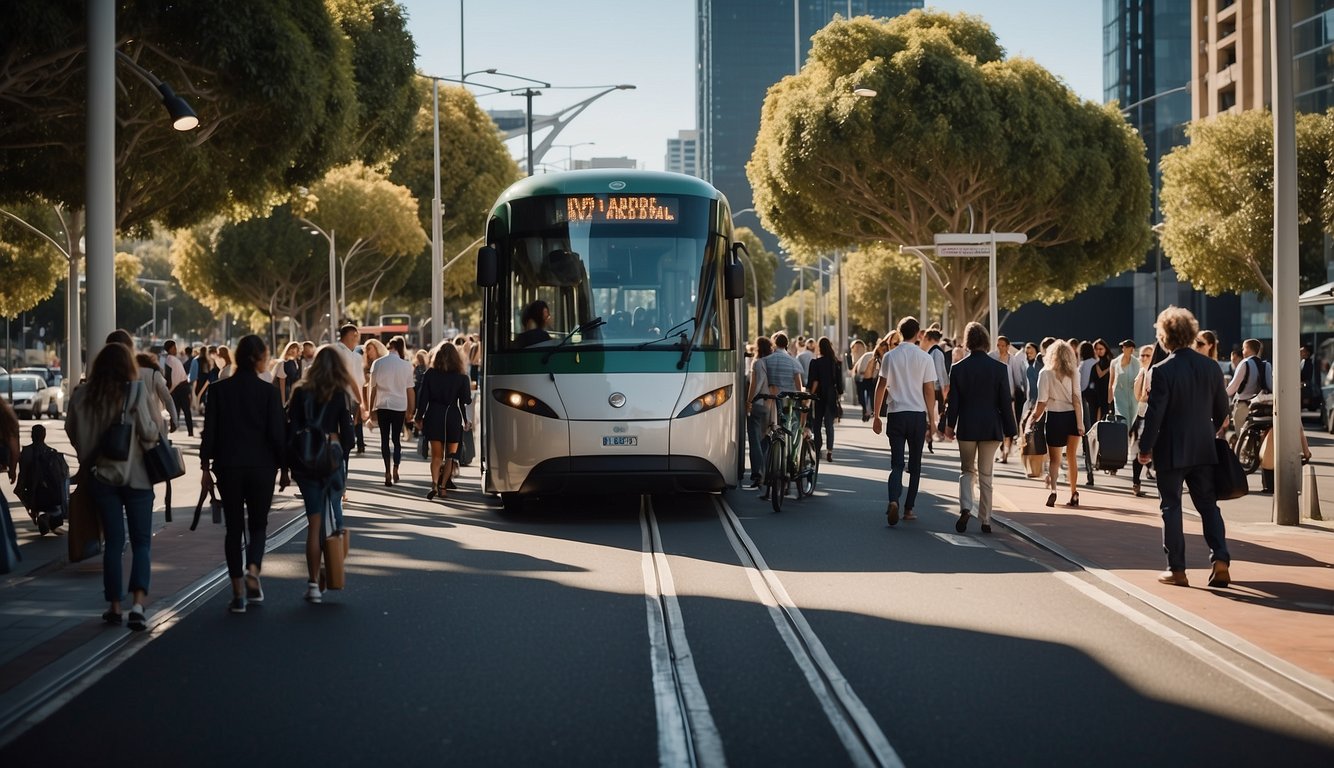Transportation in Australia: A Comprehensive Overview
Transportation is a vital component of any nation's infrastructure, and in Australia, it plays a central role in connecting its vast landscapes, diverse regions, and bustling cities. From the sprawling urban centers to the remote outback, Australia's transportation system is extensive, offering a variety of choices for both residents and visitors. This article will explore the different modes of transportation in Australia, including public transit, road networks, rail systems, air travel, and maritime transportation.
Road Transportation
Australia boasts a well-developed road network that spans over 800,000 kilometers, making it one of the largest road systems in the world. The country's roads are essential for the movement of people and goods, especially given Australia's vast distances and relatively low population density in some areas. In urban areas, cars are the most common mode of transportation. However, in more rural regions, the car is often the primary means of travel due to the lack of alternative options.
The Australian government has also made significant investments in road infrastructure, including highways, freeways, and bridges, to ensure efficient and safe travel. Notable highways such as the "Highway 1" encircle the entire continent, connecting major cities like Sydney, Melbourne, Brisbane, and Perth. These roads are crucial for long-distance travel and freight transport.
In addition to cars, Australia has a growing number of cyclists, and cities like Melbourne and Sydney are working to improve bike lanes and infrastructure to support more sustainable travel options.
Public Transportation
In Australia's larger cities, public transportation is a widely used and efficient mode of travel. Public transit systems typically include buses, trains, ferries, and light rail. Cities like Sydney, Melbourne, Brisbane, and Perth have developed comprehensive networks that serve millions of passengers every year.
Sydney’s public transportation system, for example, includes an extensive train network that links suburbs with the central business district. The city also has a well-established bus system that complements the train services. Additionally, ferries are a popular mode of transport for commuting and leisure, offering scenic views of Sydney Harbour.
Melbourne’s public transportation system is based around a combination of trams, buses, and trains. Trams are a distinctive feature of the city and play a crucial role in transporting residents across Melbourne’s inner suburbs. Brisbane and Perth also have integrated bus and train networks, while Adelaide is known for its efficient light rail system.
Public transport is managed through various state and territory authorities, each offering different fare systems, often based on smart cards or contactless payments. These systems are designed to be user-friendly, with many cities now offering apps for real-time tracking and ticket purchases.
Rail Transportation
Rail transportation in Australia has a long history and remains an important mode of travel, particularly for freight. The Australian rail system is primarily used for transporting goods across long distances, particularly mining products, agricultural commodities, and manufactured goods. The rail network is extensive, with lines connecting major cities, regional centers, and ports.
Passenger rail services are less common compared to other countries, but they still serve important routes. The iconic Ghan train travels through the heart of Australia from Adelaide to Darwin, offering an unforgettable experience of the outback. Similarly, the Indian Pacific offers a cross-country journey from Sydney to Perth, providing travelers with a chance to explore Australia’s unique landscapes.
While passenger rail services have declined in comparison to other modes of transportation, there have been efforts to revive and expand these services to meet growing demand.
Air Travel
Given Australia’s vast size, air travel is essential for long-distance travel between cities and remote areas. Australia has a well-developed network of airports, with major international airports located in Sydney, Melbourne, Brisbane, Perth, and Adelaide. Domestic air travel is a common mode of transport, with several airlines offering services between cities and regional centers.
Australia is home to two major airlines: Qantas, the flagship carrier, and Virgin Australia. Both airlines provide extensive domestic and international flight options, connecting Australia to the world. Budget carriers such as Jetstar and Tigerair also offer affordable air travel options within Australia and to nearby destinations in Asia and the Pacific.
Air travel is essential for accessing remote areas, particularly in the outback and islands, where other transportation options may not be feasible. Regional airlines and charter services play a key role in connecting small communities to the larger cities.
Maritime Transportation
Australia’s location as an island continent makes maritime transportation critical, especially for trade and tourism. The country’s major ports, including Sydney, Melbourne, Brisbane, and Fremantle, are busy hubs for the import and export of goods, particularly mining products, agricultural goods, and manufactured items.
In addition to commercial shipping, maritime transportation also plays a role in passenger travel. Ferries are commonly used to travel between Australia’s coastal cities and islands, and they offer an enjoyable way to experience the country’s coastline. For example, ferries in Sydney offer scenic rides across the harbor, while other regions have ferry services connecting islands such as Tasmania and Queensland’s islands.
Australia also has a vibrant cruise industry, with ships traveling along the coast, offering both domestic and international itineraries. Cruise ships depart from major cities, including Sydney and Brisbane, offering travelers a luxurious way to explore the Australian coastline.
Conclusion
Transportation in Australia is as diverse as the country itself. From the extensive road and rail networks that connect remote regions to the bustling urban transit systems, the country's infrastructure plays a crucial role in keeping people and goods moving. While cars remain the dominant mode of transportation, public transit, air travel, and maritime options offer a variety of choices to suit different needs. Australia’s transportation system continues to evolve with growing cities and technological advancements, promising an even more connected future.

Comments
Post a Comment